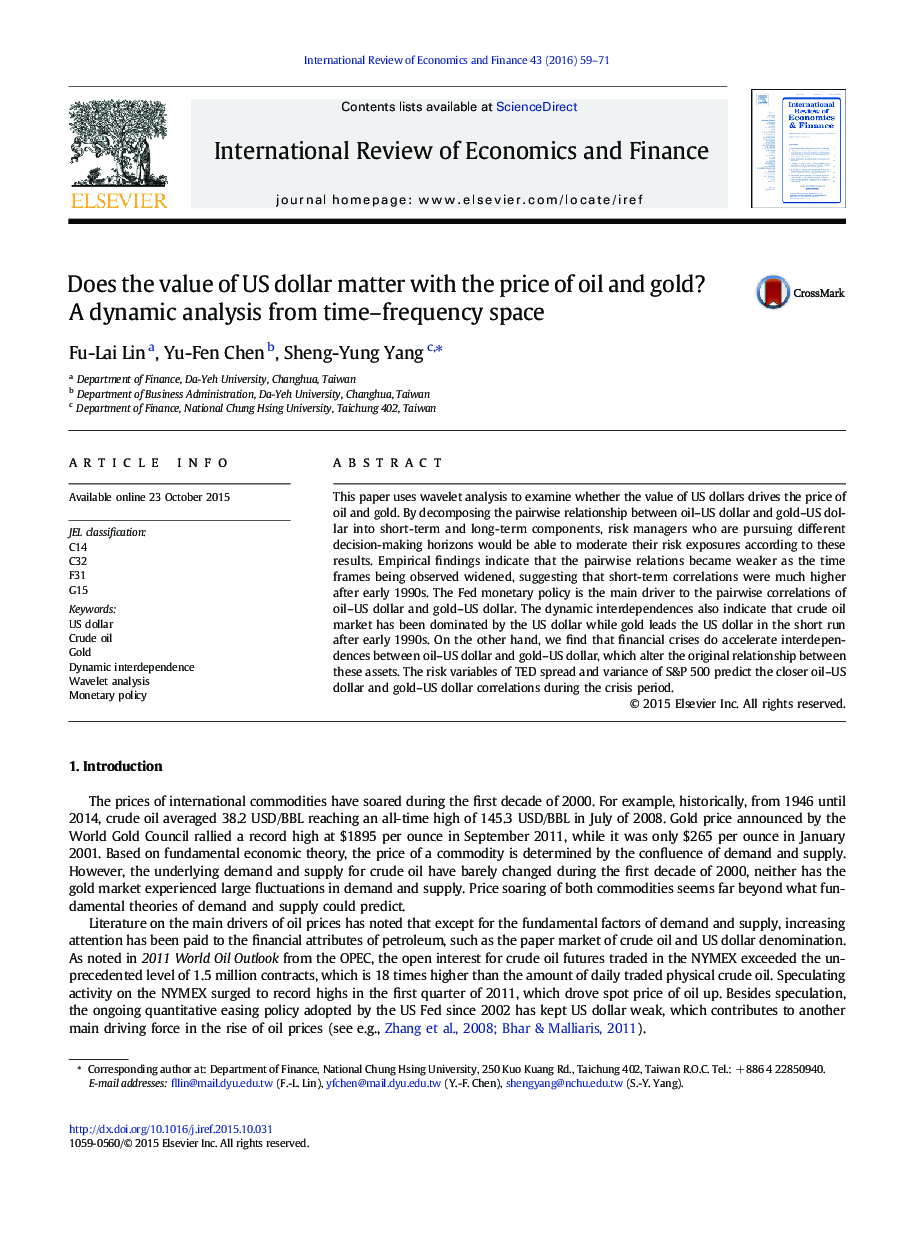| Article ID | Journal | Published Year | Pages | File Type |
|---|---|---|---|---|
| 5083334 | International Review of Economics & Finance | 2016 | 13 Pages |
This paper uses wavelet analysis to examine whether the value of US dollars drives the price of oil and gold. By decomposing the pairwise relationship between oil-US dollar and gold-US dollar into short-term and long-term components, risk managers who are pursuing different decision-making horizons would be able to moderate their risk exposures according to these results. Empirical findings indicate that the pairwise relations became weaker as the time frames being observed widened, suggesting that short-term correlations were much higher after early 1990s. The Fed monetary policy is the main driver to the pairwise correlations of oil-US dollar and gold-US dollar. The dynamic interdependences also indicate that crude oil market has been dominated by the US dollar while gold leads the US dollar in the short run after early 1990s. On the other hand, we find that financial crises do accelerate interdependences between oil-US dollar and gold-US dollar, which alter the original relationship between these assets. The risk variables of TED spread and variance of S&P 500 predict the closer oil-US dollar and gold-US dollar correlations during the crisis period.
